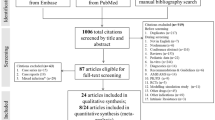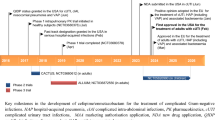Summary
Ten-day, double-blind, randomized, parallel treatment regimens of loracarbef (200 mg capsule twice daily or 15 mg/kg/day oral suspension in two divided doses up to a maximum of 375 mg/day; n=169) and penicillin V (250 mg capsule four times daily or 20 mg/kg/day suspension in four divided doses up to a maximum of 500 mg/day; n=175) were compared in the treatment of group A β-haemolytic streptococcal (GABHS) pharyngitis and tonsillitis. Post-therapy clinical responses were similar for evaluable patients in both treatment groups: 97.4% of the loracarbef group (101/115 patients cured and 11/115 improved) and 96.0% of the penicillin group (101/124 patients cured and 18/124 improved). A statistically significant difference in the pathogen elimination rate was noted between treatment groups: post-therapy throat cultures were negative for GABHS in 94.8% (109/115) of loracarbef-treated patients compared with 87.1% (108/124) of penicillin-treated patients (p=0.040). Loracarbef and penicillin V were comparable in terms of safety. Headache and nausea/vomiting were the most common events reported during therapy (nausea/vomiting were slightly less common in the loracarbef group). Three patients in each group were discontinued from the study due to drug-related adverse events; one due to rash in the loracarbef group and one due to rash and one due to vomiting in the penicillin group. These data support the conclusion that loracarbef twice daily is more effective in eradicating GABHS than penicillin V four times daily, and the two drugs are comparable in safety and clinical efficacy in the treatment of GABHS pharyngitis and tonsillitis.
Zusammenfassung
In einer 10tägigen, doppelblinden randomisierten Studie mit parallelen Behandlungsarmen wurden Loracarbef (200-mg-Kapsel zweimal täglich oder 15 mg/kg/Tag als orale Suspension in zwei Teildosen bis maximal 375 mg/Tag; n=169) und Penicillin V (250-mg-Kapsel viermal täglich oder 20 mg/kg/Tag als Suspension in vier Teildosen bis maximal 500 mg/Tag; n=175) bei der Behandlung von Pharyngitis und Tonsillitis durch β-hämolysierende Streptokokken der Gruppe A (GABHS) verglichen. Bei den auswertbaren Patienten war die klinische Erfolgsrate für beide Behandlungsgruppen ähnlich: 97,4% in der Loracarbef-Gruppe (101/115 Patienten geheilt und 11/115 gebessert) und 96,0% in der Penicillin-Gruppe (101/124 Patienten geheilt und 18/124 gebessert). Hinsichtlich der Eliminationsrate des Erregers ergab sich zwischen beiden Behandlungsgruppen ein statistisch signifikanter Unterschied: Bei 94,8% (109/115) der mit Loracarbef behandelten Patienten waren die posttherapeutischen Rachenkulturen GABHS-negativ im Vergleich zu 87,1% (108/124) der penicillinbehandelten Patienten (p=0,040). Bezüglich der Arzneimittelsicherheit waren Loracarbef und Penicillin V vergleichbar. Am häufigsten wurden unter der Therapie Kopfschmerzen und Übelkeit/Erbrechen berichtet (Übelkeit/Erbrechen traten in der Loracarbef-Gruppe geringfügig seltener auf). In jeder Gruppe brachen drei Patienten die Studie ab. Hautausschläge im Sinne arzneimittelbedingter Unverträglichkeitsreaktionen waren in der Loracarbefund Penicillin-Gruppe je einmal zu verzeichnen. Weitere Abbruchgründe waren in der Loracarbef-Gruppe ein Tonsillarabszeß am 1. Behandlungstag sowie die Verschlechterung eines bevorstehenden Kopfschmerzes. In der Penicillin-Gruppe brach ein Patient die Therapie ebenfalls wegen Kopfschmerz ab, ein weiterer wegen Erbrechens. Diese Daten untermauern den Schluß, daß die zweimal tägliche Gabe von Loracarbef und die hierdurch verbesserte Patienten-Compliance bei der Elimination von β-hämolysierenden Streptokokken der Gruppe A effektiver und hinsichtlich Sicherheit und klinischer Wirksamkeit der viermal täglichen Gabe von Penicillin V bei der Behandlung von durch GABHS verursachter Pharyngitis und Tonsillitis vergleichbar ist.
Similar content being viewed by others
References
Finch, R. G. Epidemiological features and chemotherapy of community-acquired respiratory tract infections. J. Antimicrob. Chemother. 26 (1990) Suppl. E, 53–61.
Marsland, D., Wood, M., Mayo, F. Content of family practice. J. Fam. Pract. 3 (1978) 37–68.
Rosenblatt, R., Cherkin, D., Schneeweiss, T. The structure and content of family practice: current status and future trends. J. Fam. Pract. 15 (1982) 681–722.
Huovinen, P. Causes, diagnoses and treatment of pharyngitis. Compr. Ther. 16 (1990) 59–65.
Bisno, A. L. Streptococcus pyogenes. In:Mandell, G. L., Douglas, R. G., Bennett, J. E. (eds.): Principles and practice of infectious diseases (2nd ed.). John Wiley, New York 1985, pp. 681–722.
Milatovic, D., Knauer, J. Cefadroxil versus penicillin in the treatment of streptococcal tonsillopharyngitis. Eur. J. Clin. Microbiol. Infect. Dis. 8 (1989) 282–288.
Brook, I. Treatment of patients with acute recurrent tonsillitis due to group A β-hemolytic streptococci: a prospective randomized study comparing penicillin and amoxycillin/clavulanate potassium. J. Antimicrob. Chemother. 24 (1989) 227–233.
Brook, I. The role of β-lactamase-producing bacteria in the persistence of streptococcal tonsillar infection. Rev. Infect. Dis. 6 (1984) 601–607.
Federspil, P., Grünbacher, G., Lejdeborn, L., Meder, B., Mikaelsen, T., Rasch, L. H., Torjussen, W. Sultamicillin versus amoxicillin in the treatment of tonsillitis and pharyngitis: A European Multicentre Study. APMIS Suppl. 5 (1989) 45–50.
Blaszczak, I. C., Brown, R. F., Cook, G. K., Hornback, W. J., Hoying, R. C., Indelicato, J. M., Jordan, C. L., Katner, A. S., Kinnick, M. D., McDonald, J. H., III, Morin, J. M., Munroe, J. E., Pasini, C. E. Comparative reactivity of 1-carba-1-dethiacephalosporins with cephalosporins. J. Med. Chem. 33 (1990) 1656–1662.
Crowell, T. A., Halliday, B. D., McDonald, J. H. III, Indelicato, J. M., Pasini, C. E., Wu, E. C. Y. 3-Sulfonyl-1-carba-1-dethiacephems. J. Med. Chem. 32 (1989) 2436–2442.
Knapp, C. C., Washington, J. A. II In vitro activities of LY163892, cefaclor and cefuroxime. Antimicrob. Agents Chemother. 32 (1988) 131–133.
Shelton, S., Nelson, J. D. In vitro susceptibilities of common pediatric pathogens to LY163892. Antimicrob. Agents Chemother. 32 (1988) 268–270.
National Committee for Clinical Laboratory Standards. Performance standards for antimicrobial disk susceptibility tests, 4th ed. Approved standard. NCCLS document M2-A4. Villanova, PA: NCCLS, 1990.
National Committee for Clinical Laboratory Standards. Methods for dilution antimicrobial susceptibility tests for bacteria that grow aerobically, 2nd ed. NCCLS documents M7-A2. Villanova, PA: NCCLS 1990.
Kaplan, E. L., Gastanaduy, A. S., Huwe, B. B. The role of the carrier in treatment failures following antibiotic therapy for group a streptococci in the upper respiratory tract. J. Lab. Clin. Med. 98 (1981) 326–335.
Kundsin, R. B., Miller, J. M. Significance of theStaphyloccus aureus carrier state in the treatment of disease due to group A streptococci. N. Engl. J. Med. 271 (1964) 1395–1397.
Lorian, V. (ed.): Antibiotics in laboratory medicine, 2nd edition, Williams and Wilkins, Baltimore 1986, p. 1004.
Odio, C. M., Kusmiesz, H., Shelton, S., Nelson, J. D. Comparative treatment trial of augmentin vs. cefaclor for acute otitis media. Pediatrics 75 (1985) 819–826.
Dixon, J. M. S., Lipinski, A. E. Resistance of group A beta-hemolytic streptococci to lincomycin and erythromycin. Antimicrob. Agents Chemother. 4 (1972) 333–339.
Jorgensen, J. H., Redding, J. S., Maher, L. A. Influence of storage and susceptibility test conditions on stability and activity of LY163892 and four other cephalosporins. Antimicrob. Agents Chemother. 32 (1988) 1477–1480.
Eisen, S. A., Miller, D. K., Woodward, R. S., Spitznagel, E., Przybeck, T. R. The effect of prescribed daily dose frequency on patient medication compliance. Arch. Int. Med. 150 (1990) 1881–1884.
Jones, R. N., Barry, A. L. Beta-lactamase hydrolysis and inhibition studies of the new 1-carbacephem LY163892. Eur. J. Clin. Microbiol. 6 (1987) 570–571.
Author information
Authors and Affiliations
Rights and permissions
About this article
Cite this article
Müller, O., Spirer, Z. & Wettich, K. Loracarbef versus penicillin V in the treatment of streptococcal pharyngitis and tonsillitis. Infection 20, 301–308 (1992). https://doi.org/10.1007/BF01710806
Issue Date:
DOI: https://doi.org/10.1007/BF01710806




